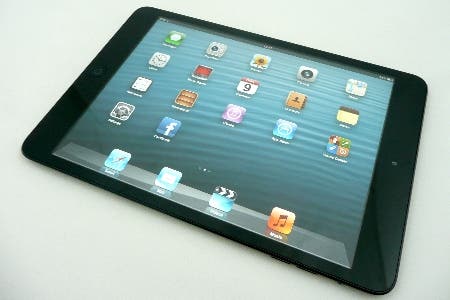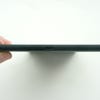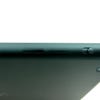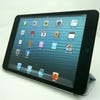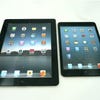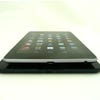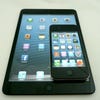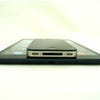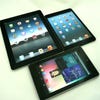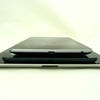iPad mini review
Gadget chic.
Across 31 months and four different iPads, Apple has played it remarkably safe when it comes to revising the form factor of its mega-selling tablet. Edges have been tapered, heft has been reduced (and then bulked up a touch), but the overall size, shape and feel of the product has remained fairly consistent while processing power and display quality have been the focus for change. These aspects are very important for some, but for the mainstream audience the look and feel of the device is perhaps more relevant.
iPad mini ticks almost all of the same functionality boxes as its larger counterparts, but is much easier to handle and can be taken anywhere. It also signals a return to the "small is sexy" approach to gadget engineering and, ironically for a device that shares so much in common with the iPad 2, it is perhaps the most radical tablet revision Apple has yet produced.
It's fair to say that we came into this review straddled with the baggage of three years' worth of iPad ownership across several different models - and as such we've come to accept the slightly awkward form factor the mini seeks to redress. There's a distinctive heft to Apple's 9.7-inch tablets and a certain unwieldiness to the design that requires holding the device in both hands, resting it on the lap while gaming or typing. It's lighter than a laptop but it's still heavy enough to make you think twice before adding it to your travel bag.
The first time you pick up the iPad mini could be something of a revelation, then: it's preposterously easy to handle, light enough to take out without worrying about weighing down your bag, and while Apple likes to remind us that it's "as thick as a pencil", the tapered edges give the illusion of an even thinner device.
Unfortunately, claims that the mini is designed for use with just one hand don't quite work out in reality - it's just a little too wide owing to the 4:3 display, and fingers have little traction on the smooth metallic rear of the unit (the all-new mini Smart Cover helps to mitigate this though). In this respect, the grippy plastic faux-leather rear of the Google Nexus 7 in combination with its narrower screen gets the job done, at the expense of display surface area.
iPad mini: the hardware essentials
Overall build quality in the new Apple tablet is highly impressive - despite the cheaper price point, this machine compares favourably with everything else in the iOS product line. There's a premium feel to the aluminium rear of the unit, we find discrete buttons for volume up/down along with the usual mute switch, plus a reassuring sense of solidity to the home button. The power button resides on the top of the device on the right, opposite the 3.5mm headset socket. Meanwhile, on the bottom of the new iPad we find the now-standard Lightning connector flanked on either side by stereo speakers. Sound quality here is surprisingly robust - a little short on bass compared to the mono speaker in previous iPads, but at max volume the mini is surprisingly loud with no distortion.
It's in the display that we find the most radical departure from the 7-inch tablet template. While 1280x800 has found favour with the Nexus 7 and the Amazon Kindle Fire HD, Apple has instead opted to shrink down the 1024x768 4:3 display of the original iPad and its successor. This makes for a device that's significantly wider than the competition when held in portrait and with a noticeably lower pixel density, but comes with a raft of advantages.
Firstly, in effectively downsizing and enhancing an existing product we find that the mini is bequeathed an enormous range of software that "just works" - no black borders, no sub-optimal phone app upscaling, no mismatch of processing power to pixel density. Just about everything on the iTunes App Store has been tailored to or adapted for the iPad 2 and thus we find an instant, ready-made library of tools and games. Secondly, Apple is right to highlight the additional real estate offered when compared to the Nexus 7 and other 16:9 mini-tablets. Web browsing and book-reading definitely benefit from the additional surface area, though field of view is clearly curtailed during gaming.
"Sticking to the established iPad 4:3 aspect ratio makes sense on the smaller form factor. Web browsing is considerably easier on the eye compared to the Google Nexus 7."
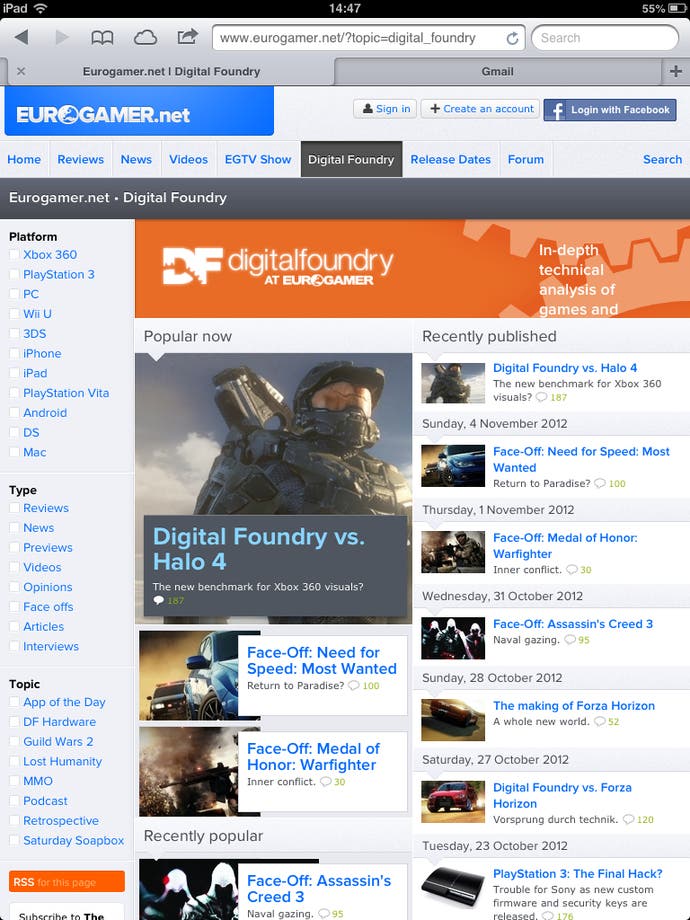
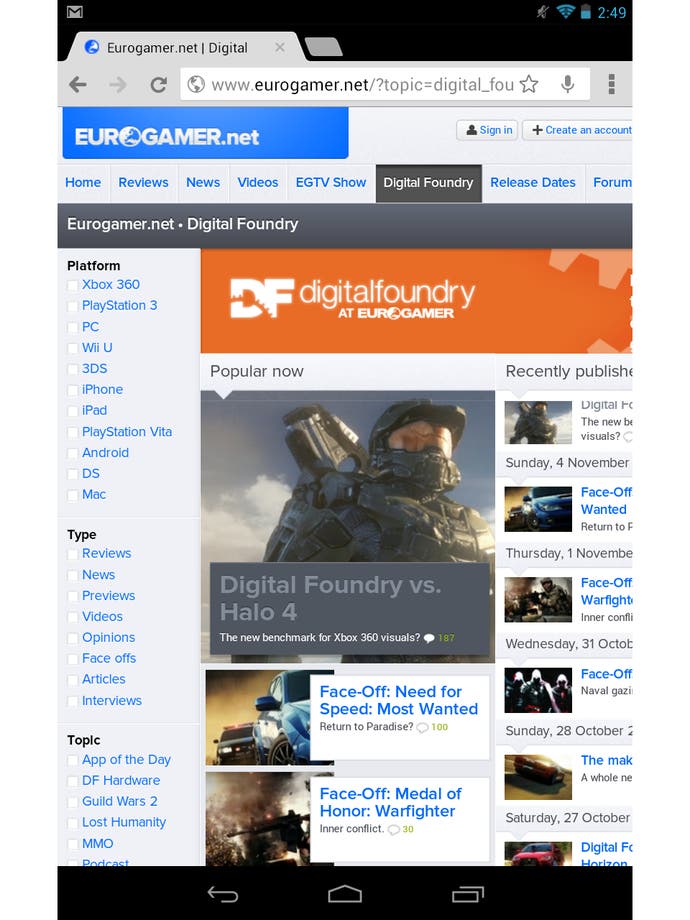


However, the capacitive IPS touchscreen display does have some drawbacks. While it's a solid performer for gaming and media playback, text rendering is a little off, a touch blurry - almost as if there's a small amount of upscaling going on (there isn't, but that's the impression). It's especially evident on small type, suggesting that lack of resolution may well be the issue. Additionally, while colour reproduction is generally good, the beautifully balanced hues of the Retina display aren't here - blacks generally impress but there's a definite yellow tinge to whites. The overall impression we get is of a screen that's a close match to the original iPad, shrunk down to the new 7.9-inch form factor, generally looking absolutely fine. However, the leap to the Retina display isn't just a matter of pixel count - vibrancy in the image takes a hit too.
The mini is a winner in terms of battery life though. While running the screen at max brightness on the most demanding 3D games can see stamina drop to around the 6.5-hour mark, the device easily hits its ten-hour average usage target and in terms of media playback you should be able to hit the 12-hour mark for 720p movie viewing. This is an exceptional achievement.
Gaming credentials: A5 returns - but which version?
Not all A5 processors are created equal - ever since the architecture's debut in March 2011, several different versions have manifested across various Apple products. There's the debut offering in the original iPad 2 fabricated on the older 45nm process which ran at 1GHz, swiftly followed up by the downclocked 800MHz version - still at 45nm - which cropped up in the iPhone 4S. Next up there's the downsized, cooler, more power-efficient 32nm A5 found in the revised iPad 2, which saw some impressive battery life gains over the original (particularly evident during gaming), while retaining the full 1GHz clock speed. The second-generation Apple TV has its own A5 too, with one of the two PowerVR GPU cores disabled. Finally, we have the fifth-generation iPod Touch, seemingly using the same die-shrunk rendition of the processor, but again running at the slower 800MHz, making it a match for the performance of the 4S.
Bearing in mind that the new iPad mini is supposed to be a "value" product, priced worryingly close to the £250 being asked for the fifth-gen Touch, our concern was that the new slate would share the same dip in clock speed, especially when the reduced area for the batteries is taken into account. As it happens, we needn't have been concerned. GLBenchmark scores reveal a clear boost in GPU performance over both the 4S and the Touch, while Geekbench confirms that the dual-core ARM Cortex A9s are indeed running at the full-fat 1GHz. Running up against our original 45nm iPad 2, we find that the new mini comprehensively matches it point for point.
"At both 1080p and device resolution, the iPad mini outperforms the Nexus 7 but the gap isn't massive - certainly not as large as the jump to iPhone 5 and the fourth-gen iPad."
| GLBenchmark 2.5 Egypt HD Off-screen (1080p) | GLBenchmark 2.5 Egypt HD On-screen (device native res) | |
|---|---|---|
| iPad 4 | 51.8FPS | 41.9FPS (2048x1536) |
| iPhone 5 | 29.1FPS | 39.9FPS (1136x640) |
| iPad 3 | 26.7FPS | 22.6FPS (2048x1536) |
| iPad mini | 14.5FPS | 24.4FPS (1024x768) |
| iPad 2 | 14.5FPS | 24.7FPS (1024x768) |
| iPod Touch 5 | 11.7FPS | 18.7FPS (1136x640) |
| iPhone 4S | 11.7FPS | 21.8FPS (960x640) |
| Galaxy S3 | 15.2FPS | 16.6FPS (1280x720) |
| Transformer Pad Infinity | 13.2FPS | 12.4FPS (1920x1200) |
| Nexus 7 | 12.3FPS | 19.5FPS (1280x800) |
Bringing in the Nexus 7 into the equation gives us a pretty good indication that, while lacking against the A5X, A6 and A6X processors, Apple's older tech still manages to pull in figures that the competition has struggled to catch up with.
So how does that translate into actual gameplay? We ran several titles across both iPad mini and Nexus 7 and came to the conclusion that while the Apple technology generally runs 3D releases at higher and more sustained frame-rates, there is not exactly a revelatory difference on most games. Riptide GP and Death Rally are good examples: both aspire to 60Hz gameplay but it's the iPad mini that attains it, while the Nexus 7 can hit the target most of the time but clearly drops frames.
Less ambitious titles like Dredd vs. Zombies hit a solid 60 frames per second on both units, while at the top end NOVA 3 struggled on both tablets but was palpably worse on the Nexus 7, despite a recent update that many believe addresses its notorious performance issues on Tegra 3 hardware. It's worth pointing out that the only satisfactory NOVA 3 performance we've seen thus far has been on the iPhone 5, which offers a sizeable increase in both CPU and GPU power over the 1GHz A5.
This is our only major concern about gaming performance on the iPad mini - that developer ambition will outstrip the capabilities of the hardware as the iPhone 5 and other products using offshoots of its technology gain traction. However, we do believe that it'll be some time before this becomes a real issue: Apple still sells the iPad 2, the mini has only just come online and the A5 Touch is also a new release. Bearing in mind that critical mass of devices, it makes sense for developers to target iPad 2/mini as the baseline platform for a good while yet though clearly the iPhone 5 and iPad 4 do command a clear performance advantage.
"Comparing iPad 2 to Nexus 7 reveals an Apple frame-rate advantage in gaming but the 4:3 aspect ratio is akin to a pan and scan movie presentation - the cheaper tablet's 16:9 screen offers a much wider field of view."
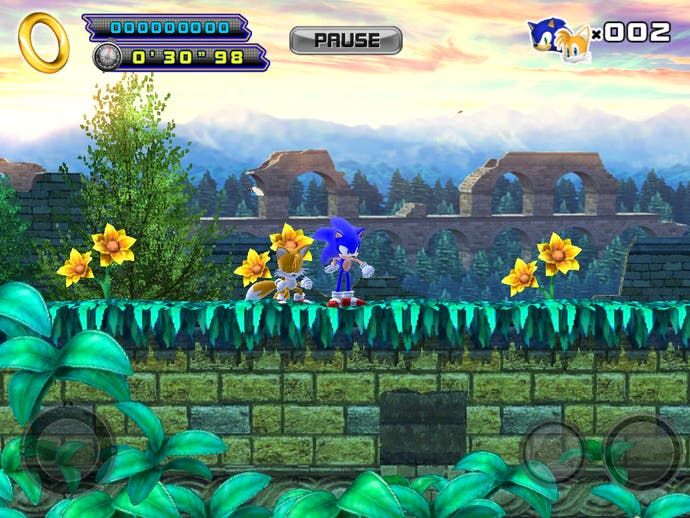
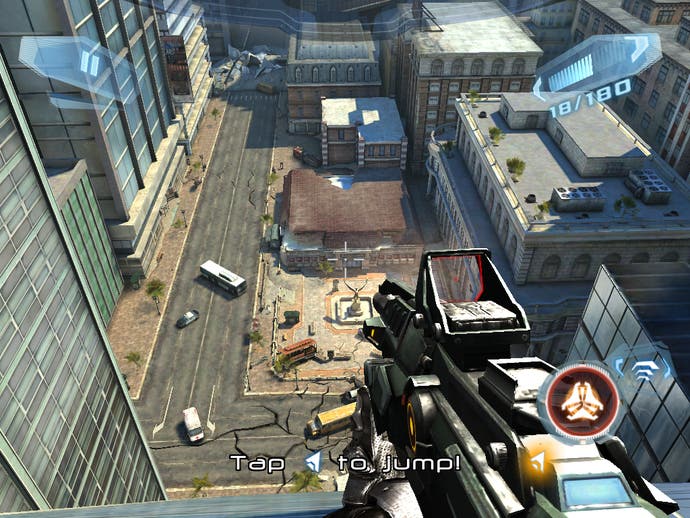
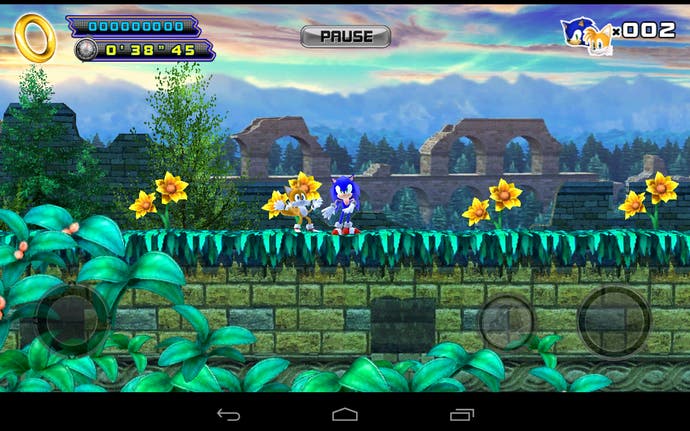
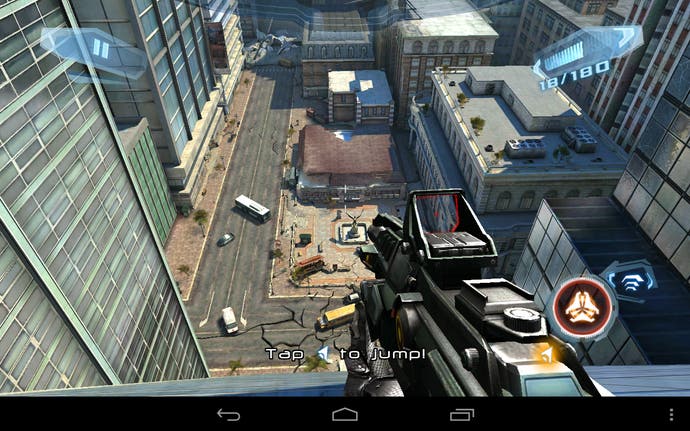
Camera quality: better than iPad 2
The notion of integrating ever more advanced camera optics into tablets mostly comes across as a complete waste of time, money and technology. Large, wide, flat slates are fine for browsing websites on the sofa or catching up with Facebook in bed. However, they don't transplant well at all into the great outdoors for an instant point-and-shoot moment, especially when glossy screens are a complete non-starter in direct sunlight. Even at home, the form factor just doesn't work - it's far easier to reach for a traditional camera or simply take out your smartphone from your pocket to capture a specific moment.
The makers of the value slates get it. Both the Nexus 7 and the Amazon Kindle Fire HD feature a 1.2-megapixel front-facing camera for video calls but completely omit any kind of rear-mounted effort. Apple, however, continues to persist with this folly, equipping the iPad mini with 1080p video recording and 5-megapixel stills functionality. The smaller size of the tablet makes it easier to work with than the 9.7-inch iPad, but it's still a bit of a faff. Overall results are good enough but not fantastic. We're reminded of the performance of the fifth-gen iPod Touch here, but while that product only had a weak LED flash, the mini doesn't have one at all - low-light performance is OK but it's no substitute for a well-lit subject. HDR photography and the panorama feature of iOS 6 are also absent from the mini for reasons which elude us.
Ironically, it's the lower-spec 1.2-megapixel front-facing camera that actually hands in an impressive showing and turns out to be more useful in everyday usage - HD video calling is big step up compared to the old VGA standard.
"iPad mini is still too large and cumbersome to be taken seriously for video and photography. LED flash, Panorama and HDR features are also absent."




iPad mini: the Digital Foundry verdict
Criticised for its price point in the wake of the recent press conference, we consider iPad mini to be fairly priced for what it offers - it's pretty much the entirety of the full-fat Apple experience miniaturised into something approaching a Kindle-sized form factor. When it comes to gadget tech, small is sexy and in this respect, the iPad mini is difficult to criticise - it's easy to hold, a joy to use and light enough to tuck into a travel bag without feeling any additional heft.
Build quality - as expected for an Apple product - is second to none, and while the A5 processor might well be last year's technology, it remains a highly worthy performer that outpaces much of the competition. While not quite so robust in terms of overall flexibility and functionality, the iOS 6 interface is faster and easier to navigate than the Android Jellybean OS in the Nexus 7 while browsing seems to be a genuinely smoother experience - surprising bearing in mind that the mini only boasts half of the onboard RAM of the Asus-designed tablet.
Benchmarks suggest a substantial advantage in graphical power but we're not talking about a generational leap in processing ability here - it all seems to come down to the iPad mini running the most challenging 3D games with smoother frame-rates than the Google tablet (though custom ROMs can boost Tegra 3 performance significantly). It's fair to say that the Nexus 7 offers a unique value proposition at £160, but then, so does the iPad mini - from a games perspective, both of these "value" slates easily and effortlessly outperform our most recent £400 test subjects, the Acer Iconia Tab A700 and the Microsoft Surface RT.
"iPad mini is a beautiful little device but we feel it's perhaps more likely to share-steal from iPad 2 and the fifth-gen Touch rather than take on the Nexus 7 directly."
If Apple's intent was to upset the value end of the market, it's fair to say that it's failed - revisiting the Nexus 7 confirms that it's an excellent device offering phenomenal value. In the mini, what we are looking at is a product that could wipe out the iPad's £250-£300 competitors but could also unintentionally disrupt sales of Apple's existing product lines.
The iPad mini is a sweet product at a good price - it makes the £250 fifth-generation iPod Touch look horrifically over-priced for what it offers, especially when you factor in that the A5 runs slower on the smaller unit. Similarly, the notion of paying £329 for a larger, bulkier, less sexy iPad 2 with the same performance level as the mini but with sub-par cameras and slower Wi-Fi seems downright bizarre. Remarkably, the arrival of the mini condemns its larger A5-powered sibling to total irrelevance, leaving only the fourth-gen tablet offering any tangible advantages owing to its Retina display and extra processing power. However, if you can live without that beautiful, top-of-the-range screen, the iPad mini and its irresistible form factor may well end up being a more compelling purchase than its bigger brother.
